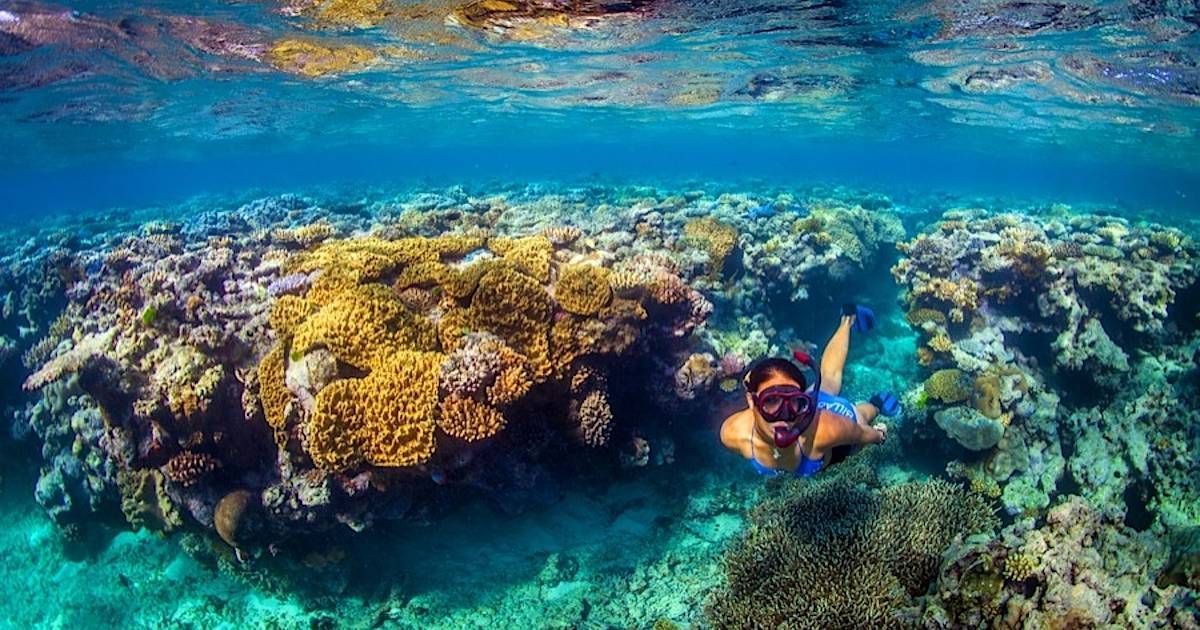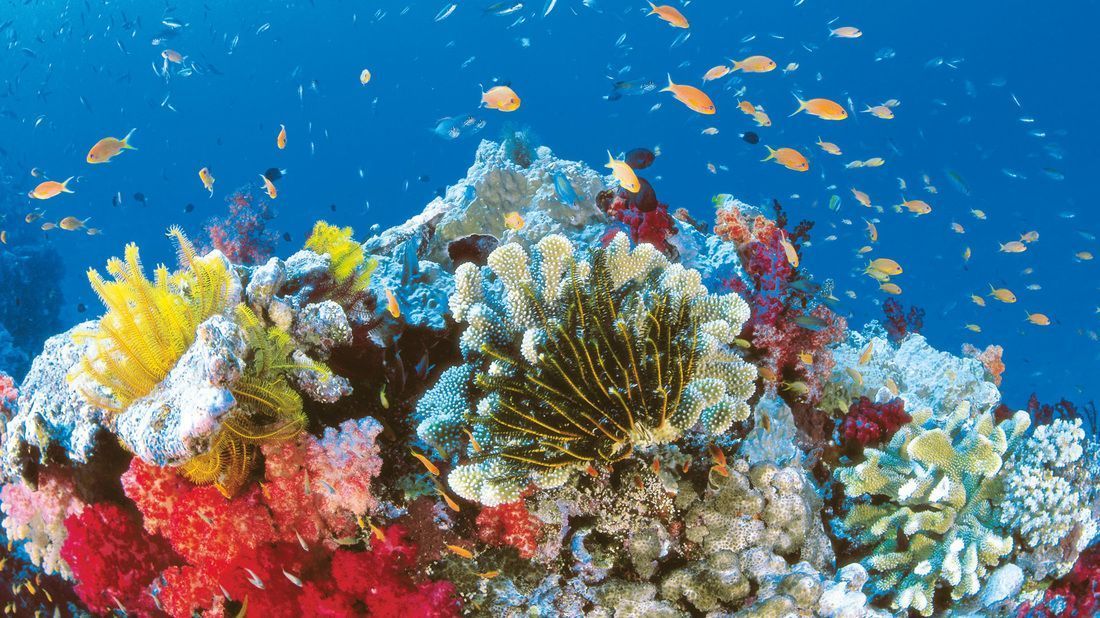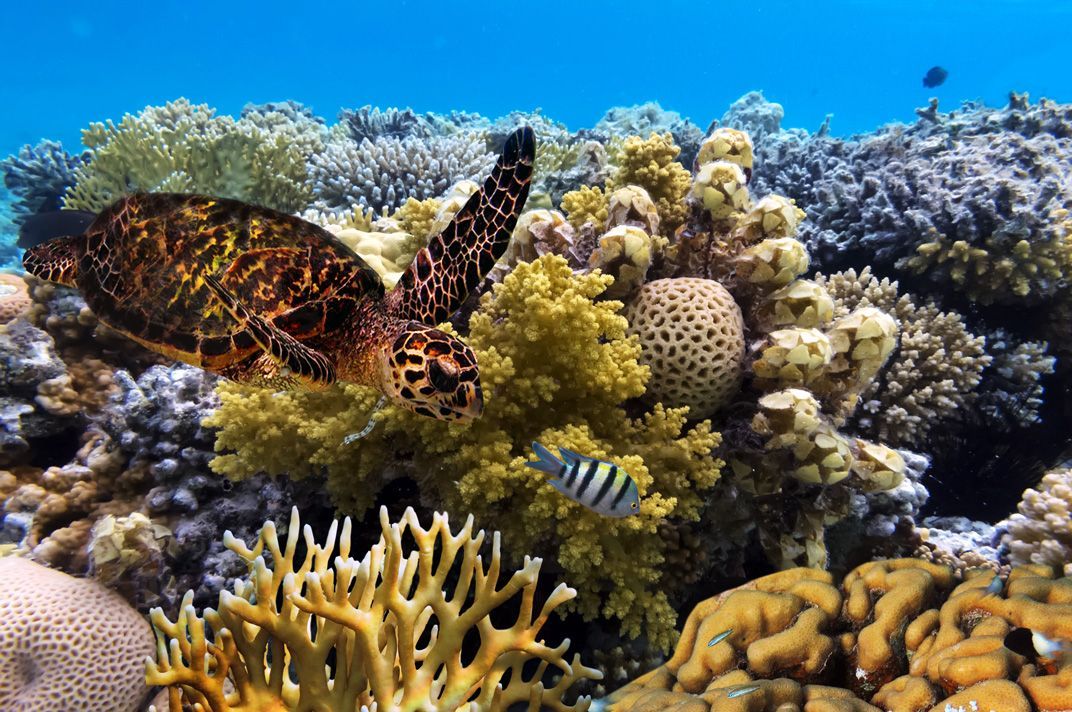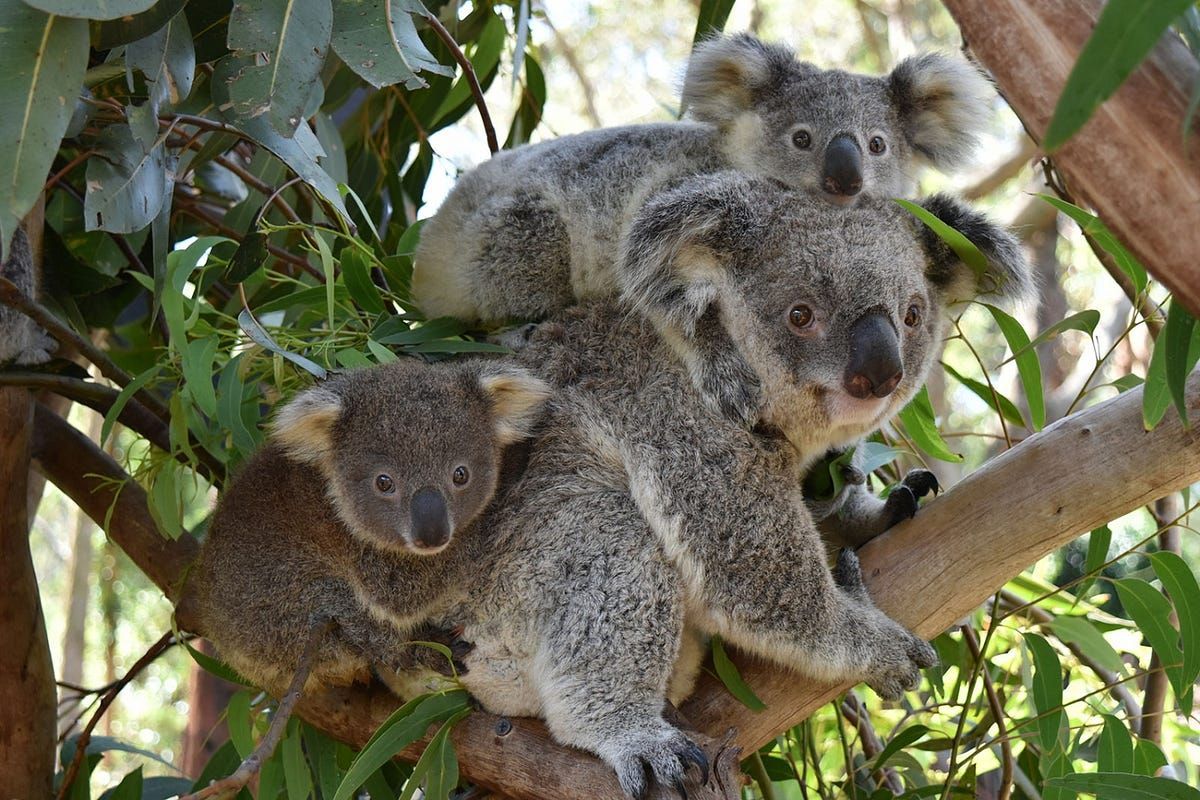To share
Diving the Great Barrier Reef is an unforgettable experience that every diving enthusiast should consider. This UNESCO World Heritage Site is home to stunning coral formations and diverse marine life, making it one of the most remarkable diving locations in the world.
From beginners to seasoned divers, the Great Barrier Reef offers something for everyone, including calm shallow waters perfect for first-timers and more challenging sites for the experienced.

Exploring the reef opens a window into an underwater paradise filled with vibrant fish, majestic sea turtles, and unique coral gardens. Divers can visit iconic locations that showcase the reef's natural beauty while engaging in responsible diving practices to protect this delicate ecosystem. Planning a trip to the Great Barrier Reef ensures a memorable adventure that balances thrill with environmental awareness.
Key Takeaways
- The Great Barrier Reef is a top diving destination with incredible marine biodiversity.
- Divers can choose from various experiences, suitable for all skill levels.
- Responsible diving practices are essential for preserving this natural wonder.
Understanding the Great Barrier Reef
The Great Barrier Reef is a rich and complex ecosystem. It is essential to understand its biodiversity and the conservation efforts in place to protect this natural wonder.
Biodiversity and Ecosystem
The Great Barrier Reef is home to a staggering array of marine life. It supports over 1,500 species of fish, 400 types of coral, and various molluscs and sea turtles. This biodiversity makes it one of the most diverse ecosystems on the planet.
Coral reefs are vital as they provide habitats for fish and other marine creatures. Coral spawning, which occurs annually, is crucial for reef regeneration. During this event, coral releases eggs and sperm into the water, promoting genetic diversity.
Despite its beauty, the reef faces threats such as coral bleaching. This happens when corals expel the algae they rely on for food, often due to rising water temperatures. This not only affects the corals but also the entire marine life that depends on them.
Conservation Efforts
Many conservation efforts are aimed at protecting the Great Barrier Reef. The Australian government and various organisations are focused on monitoring and managing the reef's health. This includes restricting fishing in sensitive areas and implementing tourism guidelines.
Programs also educate the public about the reef’s importance. They aim to raise awareness about the impacts of climate change, pollution, and destructive fishing practices. Community involvement is key in these efforts, ensuring that everyone can contribute to preserving this vital ecosystem.
Diving in the Great Barrier Reef
Diving in the Great Barrier Reef offers an unforgettable experience with its stunning visibility, diverse marine life, and an array of dive sites. The unique conditions make it a prime location for both beginners and experienced divers. Understanding what to expect enhances the diving adventure.
Visibility and Water Temperatures
Visibility in the Great Barrier Reef can generally reach between 20 to 30 metres, especially during the dry season from June to November. These clear waters make it easy to spot vibrant coral gardens and marine life.
Water temperatures vary with the seasons. During summer (December to February), temperatures range from 26°C to 30°C. In winter (June to August), they drop slightly to around 22°C to 24°C. Such temperatures are comfortable for diving, allowing for longer dives without discomfort.
Dive Sites Overview
The Great Barrier Reef is home to approximately 2,900 individual reefs and around 600 islands, offering a wide range of diving experiences. Popular dive sites include the Cod Hole, known for its large potato cod, and the SS Yongala wreck, renowned for historical significance and abundant marine life.
Protected areas, like coral gardens near Lizard Island, are ideal for beginners, providing calm waters and shallow depths. Experienced divers can explore deeper sites like Osprey Reef, where encounters with sharks and manta rays
are common. Each site offers unique features and the chance to witness the reef’s stunning biodiversity.
Marine Species Encounters
Diving here presents opportunities to encounter a variety of marine species. Common sightings include turtles gliding through the water and colourful fish schooling around vibrant corals.
Sharks are often spotted, particularly at deeper dive sites, adding excitement to the experience. Manta rays can also appear during certain seasons, often seen feeding near the surface.
In addition to these, divers may spot dolphins, reef sharks, and even the majestic dugong. The variety of life makes every dive different and keeps divers coming back for more.
Diving Conditions
Conditions for diving in the Great Barrier Reef can vary. While summer conditions include warm water and good visibility, it can also lead to thicker plankton blooms, which sometimes reduce visibility.
Wind and swell can affect diving plans. The best months for calm conditions and clear waters are usually from June to November. During these months, the likelihood of encountering storms is lower, ensuring safer diving experiences.
It’s advisable for divers to check local conditions before heading out. Be prepared for variable currents, especially at certain dive sites where marine life might be more abundant.
Certification and Dive Courses
For those new to diving, numerous options exist for training and certification. Open Water Courses provide the basics needed for safe diving.
Certified divers can choose guided dives to explore various sites tailored to their skill levels. Most dive operators offer daily trips for those wanting to learn to scuba dive or enhance their skills.
Courses can be completed in several days, allowing divers to enjoy the reef sooner. Participants will gain confidence and knowledge, ensuring a pleasurable diving experience in this world-renowned location.
Iconic Dive Locations
The Great Barrier Reef boasts numerous iconic dive locations that attract divers from around the world. Each site offers unique underwater experiences, including thrilling wreck dives and vibrant marine life. Below are three must-visit dive spots.
The SS Yongala Wreck
The SS Yongala is one of the most famous wreck dives in Australia. This historic ship sank in 1911 and now lies covered in corals and teeming with marine life. Divers can explore the well-preserved remains and discover the rich aquatic ecosystem that has developed around the wreck.
Large schools of fish, such as mackerel and barracuda, often surround the site. Notable residents include the majestic Potato Cod, which can grow over a metre long. Photographers and adventurers alike will find the vibrant corals and diverse marine species captivating.
The Ribbon Reefs
The Ribbon Reefs are a series of stunning coral formations located north of Port Douglas. These reefs are known for their clarity, allowing divers to see up to 20 metres in some areas. With walls that drop to the depths, the Ribbon Reefs provide both wall dives and swim-throughs.
Diverse marine life, including Dwarf Minke Whales during migration, can be spotted in this area. Places like the Cod Hole are particularly popular for the chance to interact with curious Potato Cod. The combination of breathtaking scenery and rich biodiversity makes the Ribbon Reefs a top dive destination.
Osprey Reef and the Coral Sea
Osprey Reef is a remote dive location that offers an incredible underwater experience in the Coral Sea. Known for its steep walls and fantastic visibility, this site attracts experienced divers seeking adventure. The reef is home to various species, including colourful corals and an abundance of fish.
Diving here, one may encounter large pelagic species like sharks and schools of fish. The pristine environment and vibrant ecosystem ensure that every dive at Osprey Reef is memorable. Following the dive, the surrounding waters are perfect for spotting other marine life or simply enjoying the scenery.
Planning Your Diving Trip

Planning a diving trip to the Great Barrier Reef requires careful consideration of several factors. Timing is important, as are choices between day trips or liveaboard options. Accommodation nearby is also a key aspect for a successful experience.
Choosing the Right Time to Visit
The best time to visit the Great Barrier Reef typically falls between June and October. This period offers clear waters and calm weather, ideal for diving. During these months, visibility can reach up to 30 metres.
The wet season, from November to April, brings tropical storms and rain, which can affect visibility. While diving is still possible, it’s wise to check weather conditions.
Planning around holidays or school breaks can also influence availability and cost. Popular spots like Cairns and Port Douglas may be busier during peak season.
Liveaboard Diving versus Day Trips
Diving options at the Great Barrier Reef generally fall into two categories: liveaboard trips and day trips.
Day trips are popular for those with limited time. They usually depart from Cairns or Port Douglas and offer a full day of diving at accessible sites. This option tends to be less expensive but limits exploration to nearby reefs.
In contrast, liveaboard diving provides a more immersive experience. Guests stay on the boat for several days, allowing them to explore more remote locations. This choice is ideal for those wanting to dive multiple sites without wasting time on travel back and forth.
Accommodation and Travel
Finding suitable accommodation is essential for a diving trip. Options range from budget hostels to luxury resorts. Staying in Cairns or Port Douglas offers easy access to tour operators and diving services.
Travel within Queensland is straightforward, with many operators providing transfers to dive sites. The region is well-connected by buses and shuttles. For those traveling to Lady Elliot Island or Whitsunday Island, direct flights may be available.
It’s advisable to book accommodation and tours in advance, especially during peak seasons. This ensures availability and helps avoid last-minute issues.
Diving Experiences Beyond the Water
Diving the Great Barrier Reef offers not only underwater adventures but also exciting activities on land. Visitors can engage in local attractions and contribute to marine conservation efforts, enhancing their overall experience.
Local Activities and Attractions
Beyond diving, Queensland hosts a variety of activities for visitors. Those staying near Hastings Reef, Flynn Reef, and Norman Reef can explore the vibrant local culture and natural beauty.
Visitors can enjoy guided tours to the Daintree Rainforest, known for its biodiversity. Scenic drives along the coast provide stunning views of the fringing reefs.
Cultural experiences include visiting Aboriginal heritage sites, learning about the rich history and traditions that shape the region.
Additionally, activities like snorkelling, wildlife watching, and scenic helicopter rides over the reef offer unique perspectives on this marine wonderland.
Marine Conservation Participation
Engaging in marine conservation is a rewarding aspect of visiting the Great Barrier Reef. Tour operators often include educational programmes focusing on coral reef education.
Volunteers can assist with coral planting projects, aimed at restoring damaged areas of the reef. Programs help educate participants on the importance of marine ecosystems.
Another opportunity is participating in beach clean-up events, which contribute to preserving the fragile environment. Attending talks and workshops on marine biology can deepen understanding of reef conservation efforts.
Organisations like Reefwatch
and local eco-tours often offer these programmes, making it easy for visitors to get involved and positively impact the area while enjoying their time in Queensland.
Marine Life of the Great Barrier Reef
The Great Barrier Reef is home to a rich variety of marine life. This underwater ecosystem includes many fish species, coral types, and larger animals that rely on the reef for their habitat and food. Understanding these species adds depth to the experience of diving in this incredible locale.
Commonly Spotted Fish and Coral Species
Diving in the Great Barrier Reef reveals a vibrant array of fish and coral species. Some of the most commonly observed fish include:
- Clownfish: Known for their bright orange colour and striking stripes, these fish often inhabit sea anemones.
- Parrotfish: Recognised for their beak-like mouths, parrotfish graze on coral, contributing to sand production.
- Reef Sharks: These sharks are usually shy and can be seen swimming gracefully near coral structures.
The reef is also home to diverse coral species. Popular types include:
- Staghorn Coral: This coral resembles a deer’s antlers and provides important habitats for many marine animals.
- Brain Coral: With its distinctive ridged surface, this coral can live for hundreds of years.
Observing these fish and coral together creates a stunning underwater landscape.
Unique and Endangered Species
The Great Barrier Reef hosts unique and endangered species that are vital to its ecological balance.
Sea Turtles are among the notable inhabitants. The reef provides nesting areas for several species, including the loggerhead and green sea turtles. These turtles play essential roles in maintaining the health of seagrass beds.
Manta Rays are another highlight. These gentle giants often glide gracefully through the water, feeding on plankton.
The reef is also home to Minke Whales that migrate through the area. They are known for their acrobatics and are a sight to behold for divers.
Lastly, Sea Snakes inhabit the waters around the reef. While venomous, they are rarely aggressive and play a part in controlling fish populations.
Preserving these unique creatures is crucial to maintaining the natural beauty of the Great Barrier Reef.
Safety and Environmental Responsibility

Diving in the Great Barrier Reef involves specific safety measures and a commitment to protecting marine life. Understanding these principles helps divers enjoy the experience while ensuring the reef remains healthy for future generations.
Dive Safety Guidelines
Safety is crucial while scuba diving. Divers should always check their equipment before entering the water. A pre-dive safety briefing with a qualified instructor is essential. They must ensure that all divers understand the signals used underwater.
It is advised to dive with a buddy. This ensures that divers can monitor each other’s safety and respond in emergencies. Knowing how to manage buoyancy and air consumption is key. Divers should also be aware of their dive limits and know when to ascend to avoid decompression sickness.
Familiarity with the local marine life helps divers identify potential hazards. Respecting current conditions is vital, and divers should avoid areas marked as dangerous. The Great Barrier Reef has high safety standards, making adherence to guidelines necessary for a safe dive.
Eco-Friendly Diving Practices
Eco-friendly diving practices are essential for coral reef conservation. Divers should avoid touching or standing on coral to prevent damage. Marine organisms play vital roles in reef ecosystems and must not be disturbed.
Using eco-friendly sunscreen can help protect marine life and habitats. Traditional sunscreens contain harmful chemicals that may affect coral health. Additionally, divers should limit their use of anchors and instead opt for mooring buoys to avoid damaging the seafloor.
Proper waste disposal is critical. Divers must take all trash with them, ensuring that no litter harms marine animals. Finally, education about local wildlife and ecosystems promotes responsible behaviours and encourages respect for these unique environments. By following these practices, divers contribute to the long-term health of the Great Barrier Reef.
Frequently Asked Questions
Diving the Great Barrier Reef raises many questions for both new and experienced divers. Understanding the best times to dive, safety measures, and the experiences available can enhance the overall adventure.
What are the most suitable seasons for diving in the Great Barrier Reef?
The best time to dive in the Great Barrier Reef is typically from June to November. Conditions during these months feature clearer waters and pleasant weather, making for better visibility. Summer months can bring warmer water temperatures but may also include storms and stronger currents.
Can non-experienced divers participate in dives at the Great Barrier Reef?
Yes, non-experienced divers can participate in dives at the Great Barrier Reef. Many tour operators offer beginner-friendly options such as introductory dives and guided tours. These experiences allow individuals to explore the reef safely with professional instructors.
What are the safety considerations for diving in the Great Barrier Reef?
Safety is crucial when diving. Divers should always check their equipment before entering the water. It's important to be aware of their own limits, stay with groups, and follow the guidance of dive instructors. Understanding local marine life and currents also contributes to a safer experience.
Which locations around the Great Barrier Reef offer the best diving experiences?
Some of the top diving spots include the Cod Hole, known for its friendly fish, and Osprey Reef, which features stunning coral walls. The Ribbon Reefs are also popular for their diverse marine life and visibility. Each location offers unique underwater landscapes and experiences for divers.
How can one find comprehensive diving packages for the Great Barrier Reef?
Many travel agencies, both online and in person, provide comprehensive diving packages for the Great Barrier Reef. These packages often include accommodation, equipment rental, and guided dives. Researching various options and reading reviews can help divers find the best deals.
Is the experience of diving in the Great Barrier Reef worth the time and effort?
Diving in the Great Barrier Reef is often described as a once-in-a-lifetime experience. The stunning underwater world filled with vibrant coral and marine life makes the effort worthwhile. Many divers leave with unforgettable memories and a deeper appreciation for ocean life.




